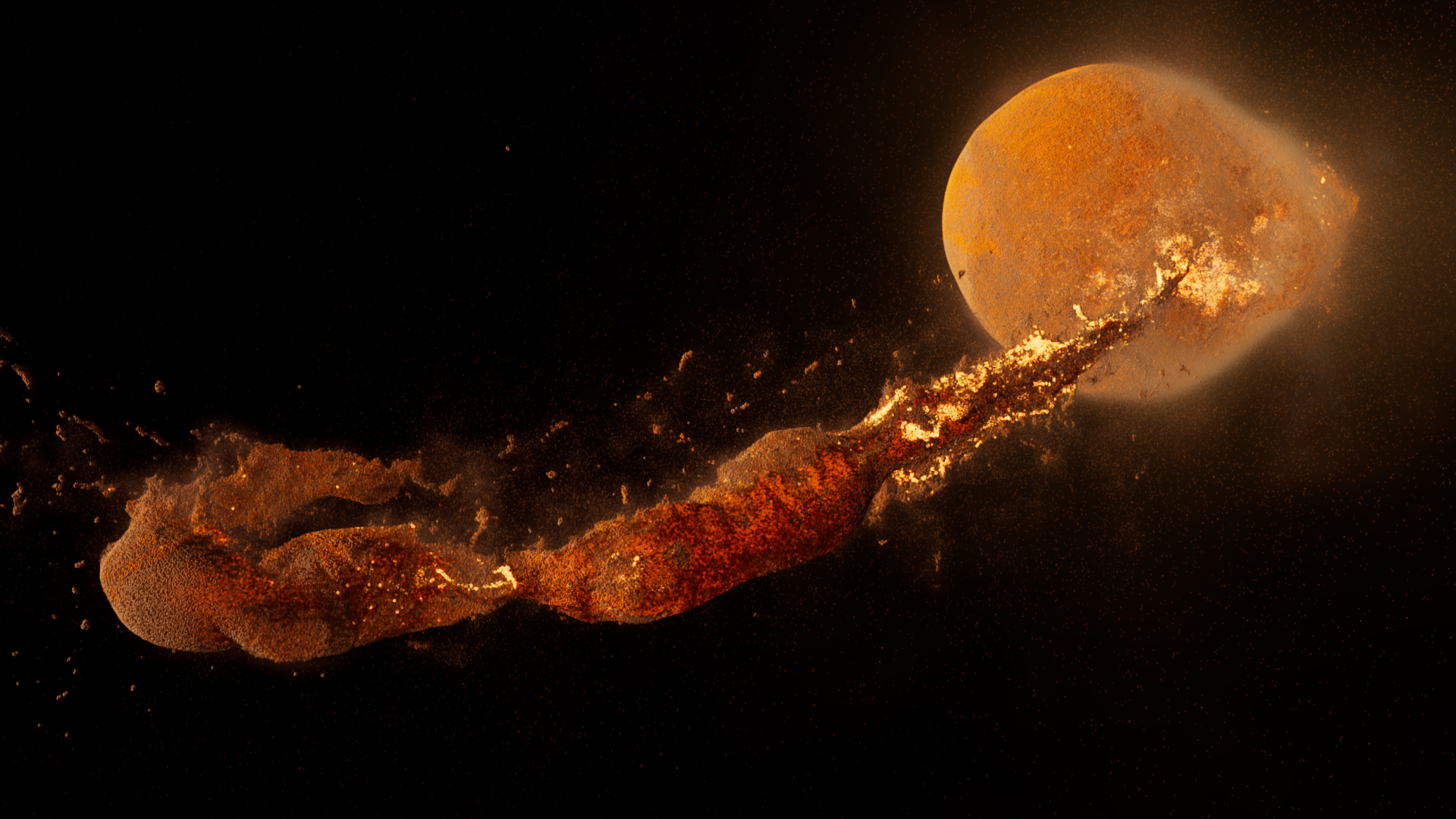Computer simulations created by scientists showcase alternate theories of how the moon was created through a giant impact, challenging the prevailing belief that the moon was formed from a disk of debris orbiting the Earth.
The researchers from Durham University’s Institute for Computational Cosmology have released four different simulations showing that one object in space could have collided into another, creating the moon as we know it. The simulations showcase how most of the moon was formed immediately after the impact, meaning less of it became molten during its formation than in previous theories, according to EurekAlert.
“This formation route could help explain the similarity in isotopic composition between the lunar rocks returned by the Apollo astronauts and Earth’s mantle,” said Vincent Eke, one of the co-authors of the study. “There may also be observable consequences for the thickness of the lunar crust, which would allow us to pin down further the type of collision that took place.”
WATCH: NASA SPACEX ROCKET TAKES ASTRONAUTS TO INTERNATIONAL SPACE STATION

The moon is believed to have formed after a collision between the young Earth and a Mars-sized object called Theia, with most theories claiming that the moon was created by the gradual accumulation of debris from the impact. However, this theory has been challenged by measurements of lunar rocks showing their composition is similar to Earth’s mantle, while the impact produced debris that came mostly from Theia.
The researchers also found that when a satellite passes in close proximity to the Earth, it can actually be pushed into a wider orbit rather than getting torn apart by the “tidal forces” from Earth’s gravity.
“We went into this project not knowing exactly what the outcomes of these very high-resolution simulations would be,” said lead researcher Jacob Kegerreis. “So, on top of the big eye-opener that standard resolutions can give you wrong answers, it was extra exciting that the new results could include a tantalizingly Moon-like satellite in orbit.”
CLICK HERE TO READ MORE FROM THE WASHINGTON EXAMINER
The team of researchers who worked on these simulations included scientists at NASA Ames Research Centre and the University of Glasgow. Their simulation findings have been published in the Astrophysical Journal Letters.

